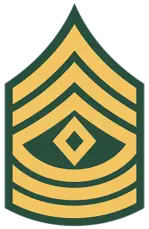
Just because you see no police rank insignias, that should not make you believe the officer's authority is diminished.
~ Barry M. Baker Tweet

Detective Lieutenant Barry M. Baker (ret.) is a 32 year veteran of the Baltimore Police Department.
Police rank insignias identifies an officer’s sworn position within the police organization, but not the officer’s authority under the law. When you see a soldier with no rank insignias on the uniform, it tells you that soldier has no authority over anyone.
It’s not that way with a police officer, because every police officer is vested with full authority under the law. Just because you see no police rank insignias, that should not make you believe the officer’s authority is diminished. The lowest ranking police officer has the same authority under the law as the highest ranking sworn member.
The Relationship between Police Rank Insignias and Military Rank Insignias
Like the military, the police department rank structure is designed for supervisory; management and command functions. In the military, the ranks of corporal through the ascending sergeant ranks are supervisory positions. Second and first lieutenants and captains are company grade ranks, and they can be compared to police management. Major through the colonel ranks are field grade officers, and they can be compared to police command.
Identifying Police Rank Insignias
Identify police rank insignias by familiarizing yourself with the enlisted and officer insignias of the United States Army. Nearly all police departments use the same insignias.
Police Rank Insignias


Some police departments may use these police rank insignias for special recognition. For example: Master Police Officer; Police Officer First Class; Trooper First Class, etc. These ranks may, or may not, carry additional authority or higher pay grade within the police organization.
Supervisory Ranks

The rank of corporal is not universal throughout police departments, but the rank does carry supervisory authority. The corporal will act as the squad or unit supervisor when the sergeant is on leave or unavailable.

The three stripe sergeant is the most common sergeant rank, and the sergeant is normally the first line of supervision.




You won’t see these sergeant insignias that frequently. They indicate ascending rank by the number of chevrons on the bottom of the police rank insignias.
Some state police agencies, which are more military oriented, utilize these multiple sergeant ranks.
Management Ranks


The lieutenant rank is universal among police departments, and nearly all police departments have only one lieutenant insignia. Whether the bar is gold or silver is a matter of choice. A few departments may use both to distinguish rank, and the silver bar is always the higher of the two police rank insignias.
Command Ranks

Captain is usually the highest rank earned through a competitive civil service process, and the captain can be either the top rank of management or the first line of command. In some departments, the captain may be referred to by another title such as “inspector.”

The ranks of major and above are all command ranks, and they are appointed by the police chief. Police officers who achieve these ranks usually have considerable political support from outside the police department.

The lieutenant colonel police rank insignias are not that common, but you’ll see them in larger police departments. A lieutenant colonel might command a department’s Internal Affairs Division (IAD). An IAD is a small entity, but the police chief might desire to have a high ranking IAD commander. The integrity of internal investigations could be better served when the IAD commander out ranks most other command staff members.

The colonel insignia is popular, and you’ll see police chiefs wearing this police rank insignia. In larger departments where people are designated as chiefs of various functions, you’ll see more of these.
The Stars - There's No Standard Here



When you see a chief of police with one star, you won’t see any other star police rank insignias in that department. If the chief wears four stars, you may see one to three stars worn by other top commanders.
I’ve only seen the five star insignia a few times, but I’m sure it’s worn by more than a few police chiefs. It’s almost always a matter of choice.
Watch a press conference involving multiple police jurisdictions, and check out the insignias of the police chiefs. If there are three police chiefs, there may well be three different police rank insignias.
Related Content for Police Rank Insignias
Advertisements


